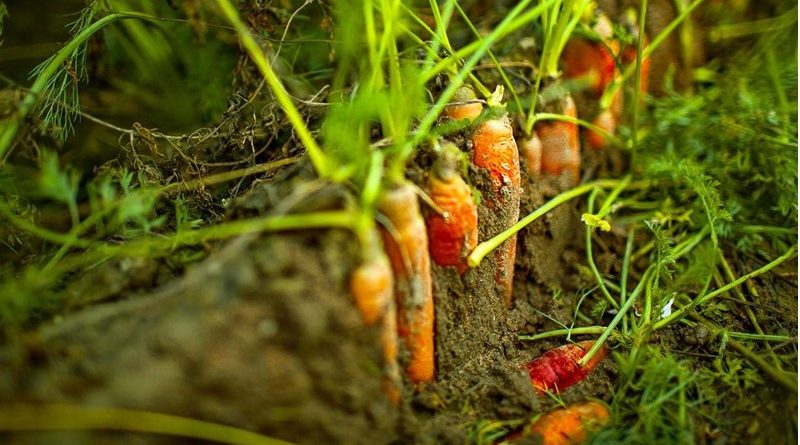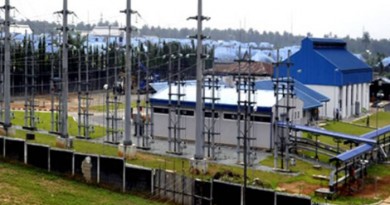Shocker! You may be eating microplastics with every bite of food and dying gradually – By Isabelle Gerretsen
Plastic pollution is one of the defining legacies of our modern way of life, but it is now so widespread it is even finding its way into fruit and vegetables as they grow
There are microplastics everywhere on the planet. They have been discovered in drinking water all around the world, within the stomachs of marine species living in the deepest ocean trenches, and buried beneath Antarctic sea ice. On the beaches of remote, uninhabited islands, plastic pollution has been discovered, and it is detected in seawater samples from all over the world. According to one study, the top layers of the oceans contain about 24.4 trillion microplastic bits.
They are widespread not only in water, but also in soils on land, and they can even end up in the food we eat. We can unknowingly be eating microscopic pieces of plastic with practically every bite.
According to research conducted in 2022 by the environmental non-profit Environmental Working Group, sewage sludge has contaminated nearly 20 million acres (80,937 sq km) of US cropland with per- and polyfluoroalkyl substances (PFAS), also known as “forever chemicals” because they are frequently found in plastic products and do not decompose under normal environmental conditions. PFAS are also known as “perfluorinated compounds” (PFCs).
The waste product remaining after municipal wastewater has been cleaned up is sewage sludge. Sludge is frequently used as organic fertilizer in the US and Europe since it is both expensive to dispose of and rich in nutrients. In the latter case, this is partly because of EU directives that support a circular economy for trash. Around 40% of the sewage sludge that is produced in Europe each year, which is estimated to be 8–10 million tonnes, is spread on agricultural land.
One wastewater treatment plant in south Wales, the UK, received up to 650 million microplastic particles daily that were between 1mm and 5mm (0.04in-0.2in) in size, according to the study’s findings. Instead of dissolving with the clean water, each of these particles ended up becoming part of the sewage sludge, which accounts for around 1% of the overall weight.
According to Catherine Wilson, one of the study’s co-authors and deputy head of Cardiff University’s Hydro-environmental Research Centre, the amount of microplastics that wind up on farmland “is definitely an underestimate.” “Microplastics are everywhere and frequently too small for us to see. Additionally, microplastics can linger there for a very long time. In a recent investigation, soil scientists from Philipps-University Marburg discovered microplastics on two agricultural fields where sewage sludge had last been deposited 34 years earlier, up to 90cm (35in) below the surface. The plastic expanded into regions where the sludge had not been applied as a result of plowing as well.
According to James Lofty, the principal author of the Cardiff study and a PhD research candidate at the Hydro-environmental Research Centre, the concentration of microplastics on farming soils in Europe is comparable to the quantity discovered in ocean surface waters.
According to study by Wilson and Lofty, the UK has some of the highest concentrations of microplastics in Europe, with 500 to 1,000 microplastic particles being dispersed on farmland there each year.
According to Lofty, the practice of utilizing sewage sludge as fertilizer not only increases the amount of microplastics on land but also exacerbates the plastics catastrophe in our oceans. As rain eventually washes the topsoil into rivers or into groundwater, the microplastics will eventually end up in waterways. Runoff, according to him, is the main cause of [plastic] contamination in our rivers and oceans.
According to one study conducted by scientists in Ontario, Canada, 99 percent of the microplastics from the sludge had already been carried to aquatic ecosystems.
Environmental toxicity
Microplastics, however, have the ability to release hazardous substances into the soil before they are washed away. Microplastics can absorb other dangerous substances, allowing them to essentially hitch a ride onto agricultural land where they can leak into the soil, in addition to being made of potentially harmful chemicals that can be released into the environment when they decompose, according to Lofty.
According to a UK Environment Agency report that was later made public by the environmental advocacy group Greenpeace, sewage waste bound for English farmland was contaminated at “levels that may create a risk to human health” with contaminants like dioxins and polycyclic aromatic hydrocarbons.
Mary Beth Kirkham, an agronomic at Kansas University, discovered in 2020 that plastic is used as a conduit for plants to absorb harmful elements like cadmium. “The wheat leaves had much, much more cadmium in them in the plants where cadmium was in the soil with plastic than in the plants that grew without plastic in the soil,” Kirkham stated at the time.
Microplastics can also slow earthworm growth and make them lose weight, according to research. Uncertainty surrounds the causes of this weight loss, but one theory suggests that microplastics may impede earthworms’ digestive tracts, preventing them from absorbing nutrients and so stunting their growth. Earthworms are crucial to preserving the health of the soil, thus this has an adverse effect on the wider environment as well, according to the researchers. Their burrowing activity enhances water drainage, aerates the soil, reduces erosion, and recycles nutrients.
Additionally, food crops might be directly harmed by plastic particles. A 2020 study in Catania, Sicily, Italy, discovered microplastics and nanoplastics in products supplied by local vendors as well as in supermarket-purchased fruit and vegetables. Carrots had the greatest concentrations of microplastics among the studied vegetables, and apples were the most polluted fruit.
According to study by Willie Peijnenburg, professor of environmental toxicology and biodiversity at Leiden University in the Netherlands, crops absorb nanoplastic particles from surrounding water and soil through tiny cracks in their roots. Nanoplastic particles are microscopic fragments measuring between 1-100nm in size, or approximately 1,000 to 100 times smaller than a human blood cell.
The majority of the plastics, according to the analysis, collected in the plant roots, with only a very little quantity reaching the shoots. According to Peijnenburg, “concentrations in the leaves are well below 1%.” He cautions that while the risk of ingesting microplastics would be higher for root vegetables like carrots, radishes, and turnips than for green crops like lettuce and cabbage where the quantities of plastic would probably be relatively low.
In a different investigation, Peijnenburg and his colleagues discovered that the concentration of microplastics in wheat and lettuce was 10 times lower than that in the surrounding soil. According to Peijnenburg, We discovered that only the tiny particles are absorbed by the plants and the larger ones are not.
According to Peijnenburg, this is consoling. But a lot of microplastics would gradually deteriorate and disintegrate into nanoparticles, offering a “excellent source for plant uptake,” he continues. According to Peijnenburg’s research, the ingestion of the plastic particles did not appear to hinder the growth of the crops. Less evident, however, is how the plastic buildup in our food affects our own health.
According to Peijnenburg, further study is required to comprehend this, especially given the fact that the issue will only worsen.
Plastics won’t completely disappear from the environment for decades, he predicts. It is not a good idea to have persistent pesticides [on agriculture], even though the risk is now not particularly great. They will accumulate and maybe create a risk as they do so.
Impacts on health
While the effects of consuming plastics on human health are still not entirely understood, some study has previously indicated that they might be negative. According to studies, the chemicals used to make plastics can interfere with the hormones that control human growth and development as well as the endocrine system.
Plastic-related chemicals have been linked to a number of different health issues, such as cancer, heart disease, and impaired fetal development. According to an examination by experts at the University of Hull in the UK, high quantities of ingested microplastics may potentially result in cell damage, which could induce inflammation and allergic reactions.
17 earlier studies that examined the toxicological effects of microplastics on human cells were analyzed by the researchers. In the investigation, amounts of microplastics that damaged cells in lab experiments were compared to those that individuals ingested through salt, seafood, and drinking water. It was discovered that the levels being consumed were on the verge of being high enough to potentially induce cell death as well as immunological reactions like allergic reactions, cell wall damage, and oxidative stress.
According to our research, we are consuming microplastics at levels consistent with damaging effects on cells, which are frequently the starting point for health impacts “explains Evangelos Danopoulos, a researcher from Hull York Medical School and the study’s lead author. “Microplastics are known to be able to penetrate cell walls and even shatter them. They are also known to damage cells by inducing oxidative stress, which is the first step in tissue damage.
According to Danopoulos, there are two possible explanations for how microplastics cause cell disintegration. According to him, either their jagged edges or the compounds in the microplastics might burst the cell wall. According to the study, microplastics with atypical shapes are most likely to result in cell death.
What we need to know right now, according to Danopoulos, is how many microplastics are still in our bodies and what type of size and shape can pass through the cell wall. The risk to human health could be significantly higher if plastics were to build up to the point where they could eventually become toxic.
Danopoulos queries whether further caution is required to ensure that microplastics do not infiltrate the food chain even in the absence of these responses. Should we use sludge as fertilizer, he asks, “if we know that it’s contaminated with microplastics and that plants may pull them out of the soil?”
prohibiting sewage sludge
In the Netherlands, spreading sludge on farmland is prohibited since 1995. After issues at an Amsterdam incineration plant, the nation began exporting the sludge to the UK, where it was utilized as fertilizer on farms.
Because it “comprises a full variety of toxic compounds and pathogenic organisms produced by industry and private houses,” Switzerland forbade the use of sewage sludge as fertilizer in 2003. Following the discovery of significant PFAS concentrations in farmland soil, crops, and water by environmental authorities in April 2022, the US state of Maine likewise outlawed the practice. The blood of farmers also contained high concentrations of PFAS. Multiple farms had to be shut down due to the widespread contamination.
Sludge cannot be composted alongside other organic materials, according to a new Maine legislation. However, Wilson of Cardiff University argues that a complete prohibition on the use of sewage sludge as fertilizer is not always the wisest course of action. According to her, it might instead encourage farmers to use more synthetic nitrogen fertilizers manufactured from natural gas.
In employing sewage sludge, we are effectively utilizing a waste product rather than continuously generating fertilisers from fossil fuels, according to Wilson. According to her, the organic waste in sludge also aids in the recycling of carbon into the soil and enriches it with nutrients like phosphate and nitrogen, preventing soil deterioration.
In order to identify the hot spots and begin controlling the problem, we need to quantify the amount of microplastics in sewage sludge, according to Wilson. She advises that instead of being used as fertilizer in areas where there are large concentrations of microplastics, sewage sludge may be burned to produce electricity. Fats, oils, and grease, which have high amounts of microplastics, can be recovered at wastewater treatment facilities and used as biofuel instead of being combined with sludge, according to Wilson and her coworkers.
The researchers highlight that certain European nations, including Italy and Greece, dispose of sewage sludge in landfills, but they issue a warning that there is a chance that these sites could release microplastics into the environment and contaminate nearby land and water bodies.
Wilson and Danopoulos concur that much more investigation is required to estimate the quantity of microplastics present on agriculture and their potential effects on the ecosystem and human health.
Microplastics are currently on the verge of becoming a pollution, Danopoulos warns. Something that is discovered where it shouldn’t be is called a contamination. Our water and soil shouldn’t include microplastics. If we can demonstrate that they cause harm, it would make them a pollution, and we would need to enact laws and regulations.
SOURCE: By Isabelle Gerretsen BBC.COM. This story was originally published by the BBC under the caption How microplastics are infiltrating the food you eat




